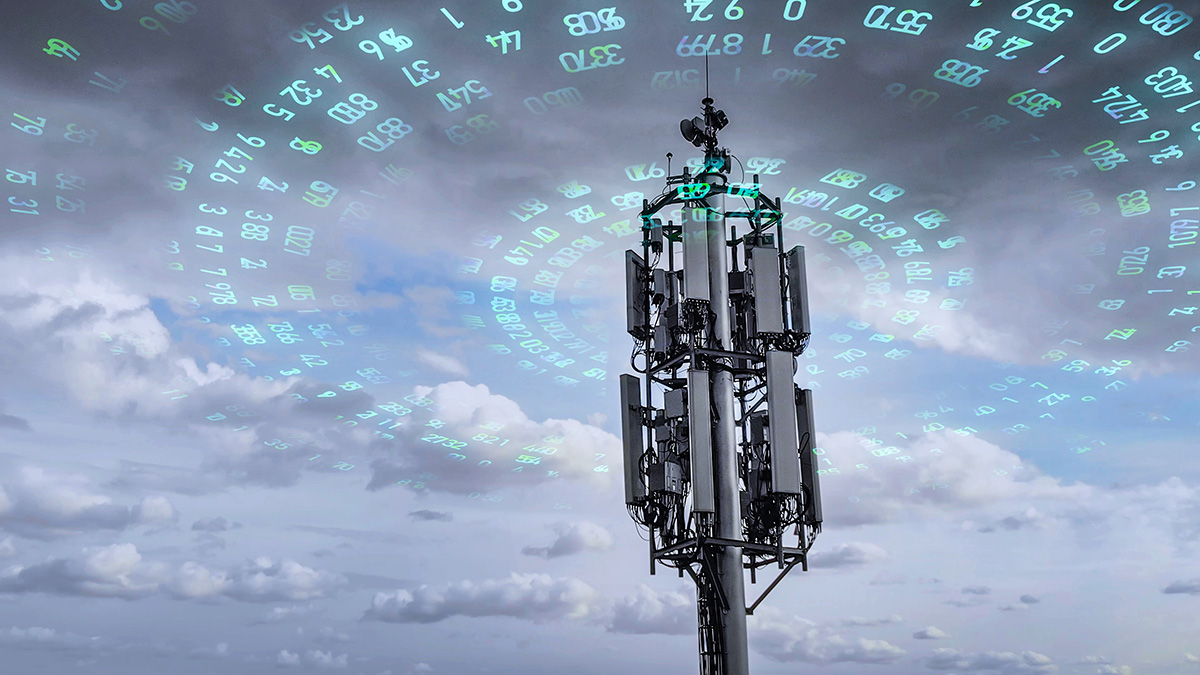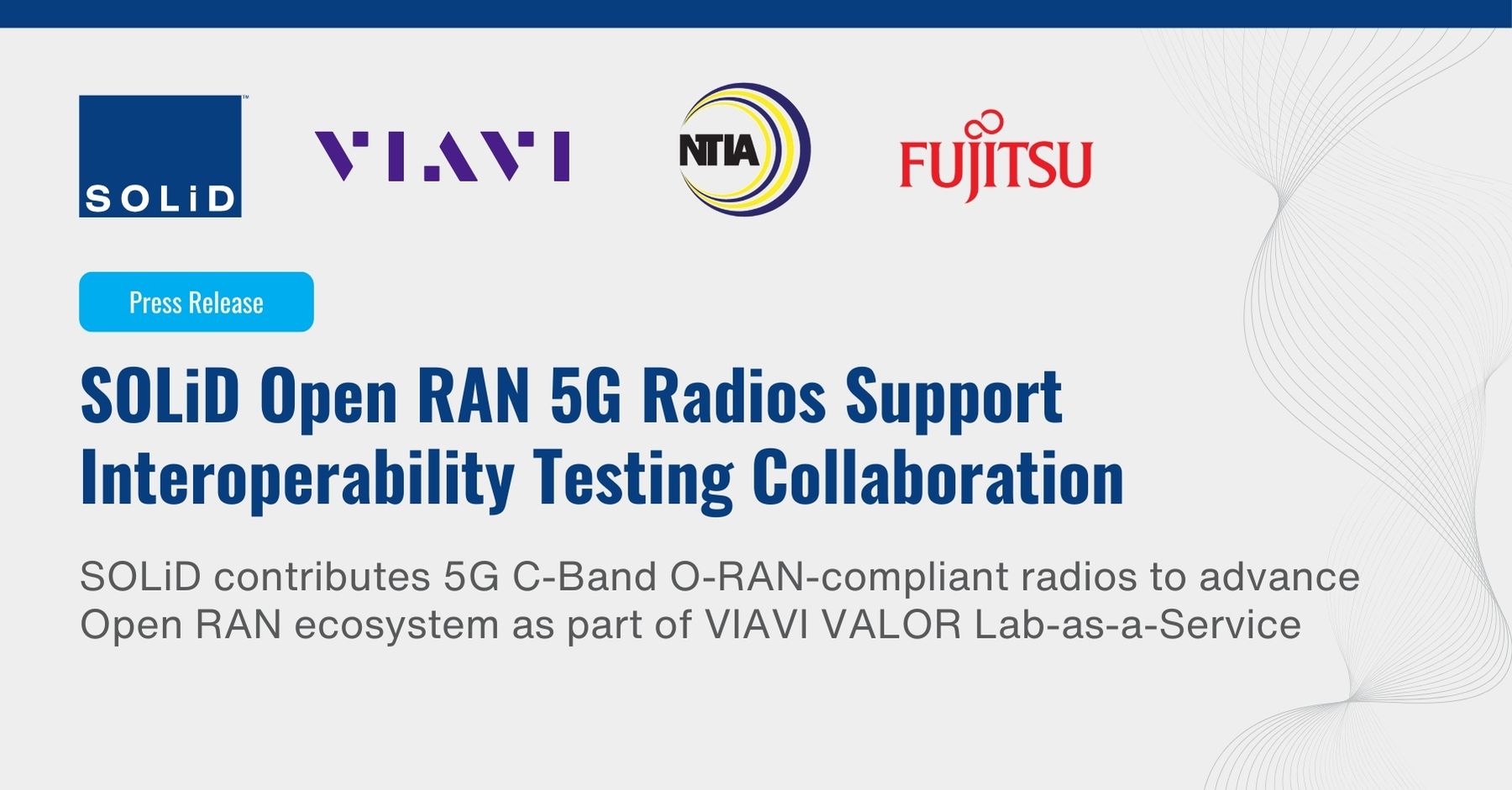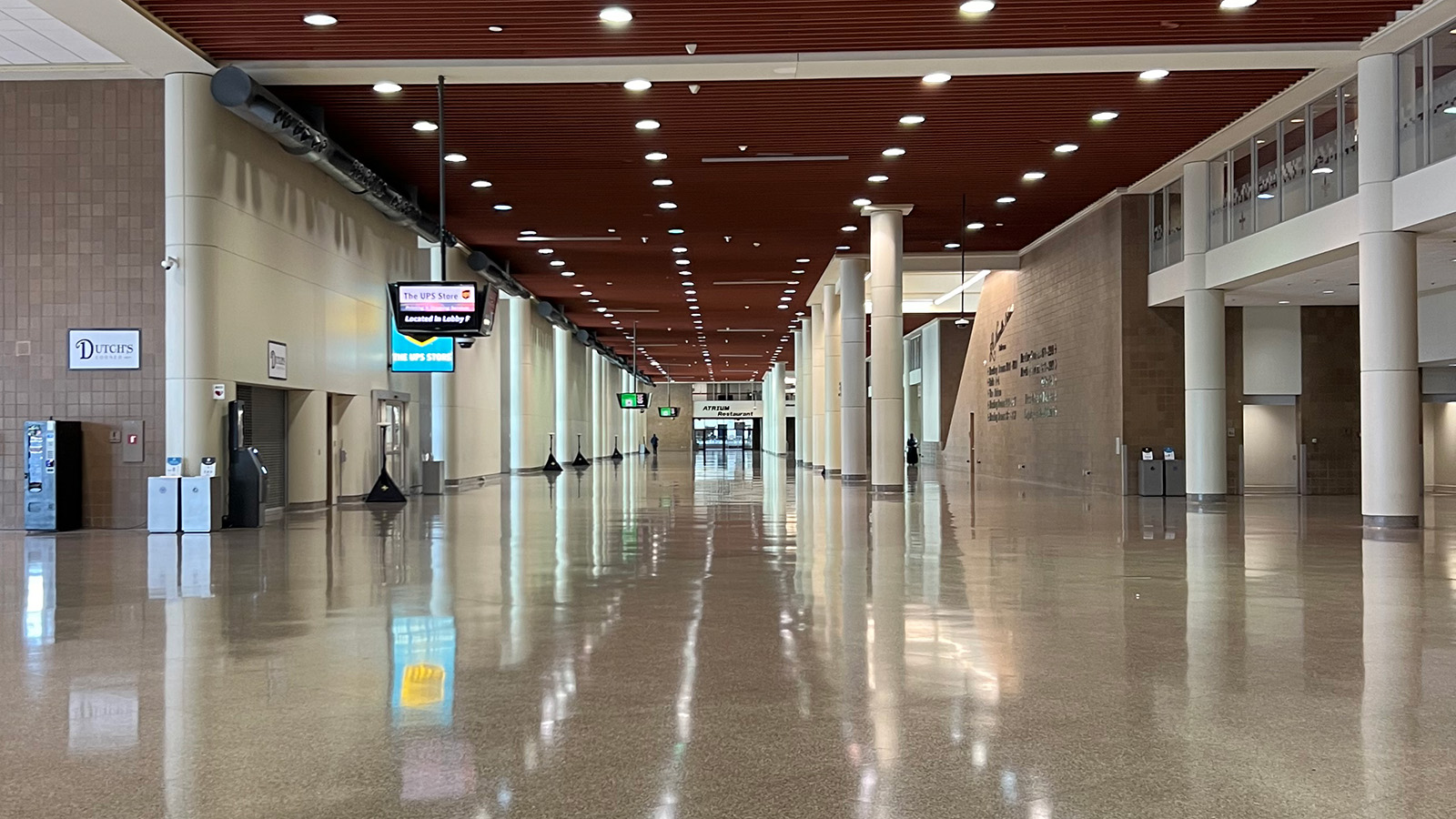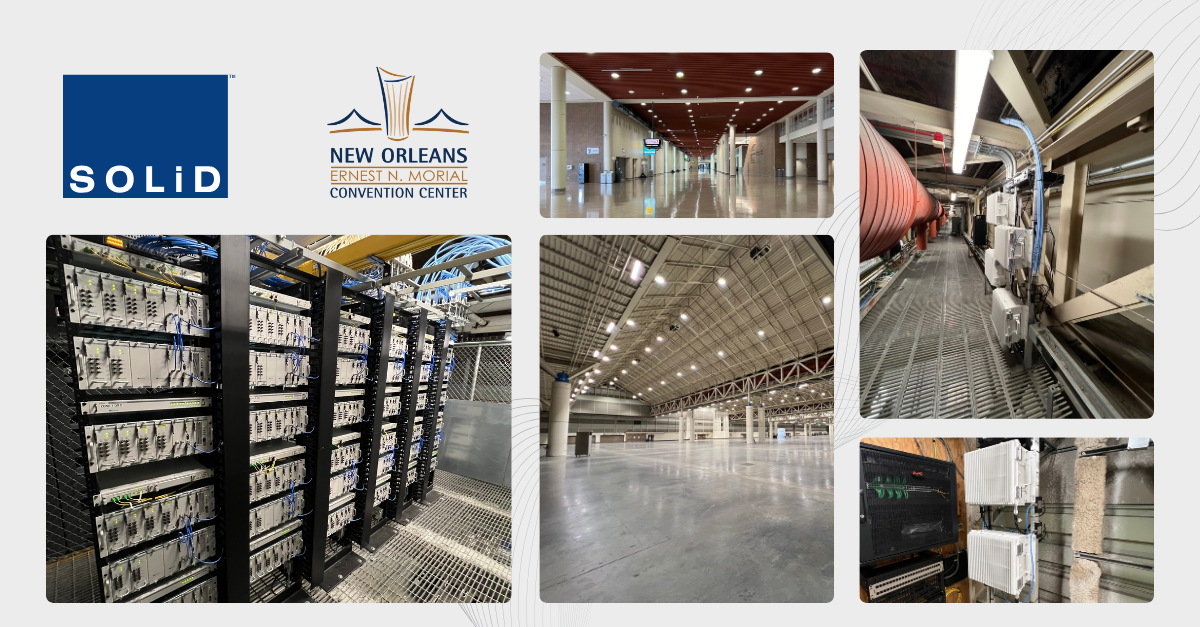What DAS Trends Do We Expect to See in 2025?

The continuing demand for greater bandwidth and more pervasive connectivity is driving the communications industry to a crossroads. Even as mobile network traffic has grown nearly 130 percent, mobile network operators’ (MNOs) average revenue per user (ARPU) remains mostly flat.
With billions of dollars invested in 5G that MNOs have yet to recoup, many industry players plan to offer new differentiated services in the hopes they can increase return on investment (ROI). Alternatively, others are focusing more on ways to decrease both operational expenditures (OpEx) and capital expenditures (CapEx) whenever possible.
So, how will these disparate movements across the MNO landscape impact in-building distributed antenna system (DAS) market trends in 2025?
Cost Cutting Focus
Hyper-connected mobile subscribers expect seamless, always-on communications everywhere. For building owners, venues, and enterprises, that means providing reliable in-building connectivity for employees, tenants, visitors, and event attendees. Yet, with shrinking profit margins due to sluggish ARPU, MNOs may be less willing to spend capital for expanded in-building coverage. Moreover, third-party operators (3POs) are also not interested in risking capital to build out DAS coverage without financial commitments from the MNOs.
This stalemate between network operators and 3POs stifled many big projects throughout 2024, often leaving enterprises and building owners to foot the bill themselves for expanded in-building coverage. Given that many legacy enterprise coverage solutions only cover a portion of the current 5G radio frequency (RF) bands, future demand will quickly outpace the initial capacity of these systems. Therefore, having a neutral-host DAS platform with modular upgrade capabilities is increasingly vital to enable pay-as-you-grow scalability and sustainability.
One exception to this situation will be connectivity provision for high-capacity venues. The opportunity for increased revenue from sports and music fans means that MNOs will continue to pay to build out improved coverage in large stadiums and event venues, but with a reduced scope to keep costs under control.
Spectrum on Sale
Another approach to increase ROI that some MNOs are pursuing is the sale of RF spectrum, such as T-Mobile divesting its 3.45 GHz upper mid-band spectrum licenses to a private equity firm. Likewise, ongoing market consolidation is leading to sales of additional spectrum assets. Most notably, after having sold some spectrum to the Tier One MNOs last year, US Cellular is now offloading more assets to regional players as well. In fact, T-Mobile has announced plans to acquire US Cellular’s wireless operations in addition to 30 percent of the company’s spectrum, subject to regulatory approval expected this year.
Another entity that may be looking to sell spectrum licenses in the near future is the U.S. government — that is, assuming that Congress reinstates the Federal Communications Commission’s auction authority. However, whether or not this actually happens this year, it may be a few years before we see any meaningful impact. Spectrum auctions take time to plan and implement; MNOs require time to plan; and, of course, mobile devices need to be created to support the new frequency bands. At this point, it’s most likely that any new spectrum auctioned off will be intended for 6G use cases.
Throwback to 4G
Despite a great deal of hype around the private network market over the past few years, private 5G adoption by enterprises has been much slower than anticipated. In fact, for some smaller enterprises that don’t require the high speeds and low latency of 5G, private 4G in-building coverage is sufficient.
To meet the needs of these applications, a growing number of ‘off-air’ solutions will be available during the next year. These passive DAS solutions use an exterior antenna to obtain signals from the nearest cell site for in-building DAS coverage that works with all Tier One public networks. This type of DAS solution is well-suited to provide cost-effective connectivity for buildings less than 200,000 square feet.
Open to Open RAN
A focus on affordable scalability throughout the mobile communications industry is steadily driving forward advancements in Open RAN technology. But O-RAN is not just for macro public networks. When used in combination with DAS technology, O-RAN enables low-cost, low-power, signal sources to further simplify and streamline DAS deployments. This trend is expected to continue gaining momentum in 2025 and beyond.
Sharing Ramps Up
Ultimately, we will see a growing number of different solutions available for indoor connectivity provision, as MNOs, third-party operators, and building owners alike seek the most affordable, accessible, scalable options to meet their unique needs. Central among these solutions will be those that increase RAN sharing, such as multi-operator RAN (MORAN) or multi-operator core network (MOCN) architecture, in order to achieve maximum cost efficiency.
At SOLiD, we will continue to innovate to offer trusted, industry-leading solutions designed for longevity and upgradeability tailored to the world’s most challenging venues, from our established modular ALLIANCE 5G DAS platform to the latest Open RAN technologies. To learn more, visit: solid.com/us/industries.
SOLiD Awarded NTIA Grant for Open RAN Development Project
Advancement of SOLiD O-RAN-compliant technology to empower more efficient, sustainable, multi-operator in-building 5G connectivity
SOLiD, the leader in cellular in-building mobile coverage, is a recipient of a $27.68 Million grant from the U.S. National Telecommunications and Information Administration (NTIA) Public Wireless Supply Chain Innovation Fund (PWSCIF). The award is intended to advance SOLiD’s Open RAN technology development for neutral-host, in-building 5G network service.
SOLiD’s Open RAN radio unit (O-RU) technology enables simple and economical use of 4G and 5G spectrum for greater service agility, scalability, and efficiency. The Wireless Innovation Fund grant is awarded to develop multi-operator O-RU signal source technology integrated with distributed antenna system (DAS) infrastructure, enabling open access to in-building configurations.
As part of this project, SOLiD will enhance the research and development of O-RAN-compliant products to support the latest RAN-sharing models, such as multi-operator radio access network (MORAN) architectures. The evolution of neutral host RAN sharing infrastructure will enable more efficient, scalable, and cost-effective design, deployment, and maintenance of in-building 5G networks.
“This NTIA Wireless Innovation Fund award is a recognition of SOLiD’s technological leadership in wireless infrastructure, and validates our approach to high-performance in-building connectivity through the precise integration of Open RAN and DAS technologies,” said Scott Deweese, president of SOLiD Americas. “SOLiD is committed to commercializing outstanding O-RAN-compliant solutions to empower more affordable and sustainable multi-operator in-building coverage.”
SOLiD Open RAN 5G Radios Support Interoperability Testing Collaboration
SOLiD, the leader in cellular in-building mobile coverage, today announced that SOLiD 5G Open RAN radio equipment is incorporated in a collaborative industry effort to support multi-vendor testing of open network architectures, the VIAVI Automated Lab-as-a-Service for Open RAN (VALOR™), which is funded by the U.S. National Telecommunications and Information Administration (NTIA) Public Wireless Supply Chain Innovation Fund (PWSCIF).
SOLiD’s C-Band Open RAN Radio Unit (O-RU) enables simple and economical use of 5G mid-band spectrum to improve neutral-host, in-building 5G network service agility, scalability, and efficiency. The VALOR lab service will conduct impartial testing of SOLiD’s O-RUs to demonstrate interoperability with multi-vendor virtual and physical 5G baseband components, including Fujitsu O-RAN virtualized CU/DU.As a member of the O-RAN ALLIANCE, SOLiD is committed to advancing the Open RAN ecosystem, supporting open architecture interoperability and end-to-end network operation. To that end, SOLiD offers O-RAN-compliant radio technology, as well as best-in-class distributed antenna system (DAS) solutions that use O-RAN signal sources to deliver in-building 5G connectivity and scalability.
“At SOLiD, we firmly believe that industry collaboration such as the VALOR testing service is key to enabling dedicated, impartial testing to validate multi-vendor component interoperability, performance, and security,” said Scott Deweese, president of SOLiD Americas. “We are pleased to support cooperative efforts that advance interoperability, empowering greater performance, agility, reliability, and cost-efficiency for private and public 5G networks alike, and paving the way to next-generation 6G architectures.”
“Impartial testing of open 5G network architectures is imperative to enable mobile network operators to deploy best-of-breed Open RAN architectures that allow greater agility and innovation, as well as optimized network performance,” said Masaki Taniguchi, senior vice president and head of the mobile systems business unit at Fujitsu. “As a pioneer in open networking, Fujitsu welcomes industry-wide participation that bolsters a robust Open RAN ecosystem.”
How In-Building Connectivity Transforms Hospitality Experiences
Guests’ ability to leverage high-tech services, such as digital keys and mobile check-in, depends on seamless connectivity. Learn how upgrading distributed antenna system (DAS) architecture can help.
How Hospitals are Improving Care With Private 5G Networks

Twenty-first century healthcare runs on digital technology. From electronic health records and telemedicine services to robot-assisted surgery, a groundswell of technology advancements have modernized the delivery of patient care. In order to take full advantage of these advances, a number of healthcare providers are implementing digital transformation, with 92 percent citing that achieving a better patient experience is their top goal.
Yet, as hospitals transform their facilities and IT systems to enable innovative new services and technologies, a fundamental consideration is how to provide reliable, secure access to digital resources for hospital staff, caregivers, and patients.
Access Everywhere
Traditionally, hospitals and healthcare facilities have relied on wired local area networks (LANs) to provide secure, dedicated connectivity. However, many cutting-edge digital technologies require mobile availability to enable real-time information exchange for faster diagnoses and shorter waiting times. Alternatively, Wi-Fi networks often experience traffic congestion and interference due to a sudden influx of people and devices competing for bandwidth, impacting staff communication, patient monitoring, and other critical applications.
As mobile network technology continues to evolve, advances in 5G infrastructure and spectrum availability are creating new alternatives for robust, dedicated, on-the-go connectivity. Private 5G/ LTE networks provide healthcare facilities with a more secure, pervasive connectivity experience, enabling sufficient bandwidth for smartphones, laptops, and connected medical devices to work all the time, everywhere, throughout buildings and across campus.
Private 5G networks offer the advantages of mobility along with reliable security, ultra-low latency, lightning-fast data speeds, dedicated bandwidth, and scalable capacity. The capability to quickly and securely transmit large amounts of data, such as medical images or patient records, enables more effective diagnosis and treatment. In this way, hospitals can harness the power of 5G connectivity with peace of mind, allowing them to maintain HIPAA compliance and easing security concerns related to data breaches and ransomware attacks. Plus, when using Citizens Broadband Radio Service (CBRS) frequency bands, healthcare facilities can ensure 24x7 availability of mission-critical medical devices and applications without massive budget concerns.
Transformational Healthcare
With the growing adoption of private 5G networks, the healthcare industry is poised for substantial improvements in care today, while setting the stage for revolutionary advancements in the future. For example, a more reliable, secure exchange of information enables improvements in the patient intake process, healthcare staff communications, and transmission of diagnostic data and digital health records – all of which contributes to faster response times, efficient use of resources, more accurate record-keeping, and the best possible patient care experience.
Due to the massive connectivity and ultra-low latency of private 5G, this technology is ideal for remote surgeries using robotics and virtual reality (VR)/ augmented reality (AR) simulations. Likewise, the large bandwidth capacity is well-suited to conducting mobile ultrasound exams, remote medical imaging, and video consultations with home-bound patients. Hospitals also could use 5G connectivity for an interactive display in patients’ rooms that functions as a digital whiteboard, entertainment, and environmental control.
Additionally, private 5G networks offer the robust connectivity needed for a myriad of applications made possible by the Internet of Medical Things (IoMT). These use cases range from wearable smart sensors that continuously monitor patient vital signs and notify nursing staff and doctors in real-time, to diagnostic equipment maintenance, to monitoring temperature and other environmental conditions for medicine storage, thereby reducing waste and ensuring patient safety.
Revolutionizing Patient Care
With access to the secure, pervasive connectivity enabled by private 5G networks, caregivers have the opportunity to vastly improve the patient experience to ensure the best possible overall care outcomes. To realize this digital transformation vision, however, it’s important for hospitals and healthcare facilities to consider how their building lay-out and materials will impact 5G connectivity and coverage. For example, modern building materials, lead-lined walls in radiological departments, stainless steel surfaces in operating rooms, and large diagnostic equipment can all impede 5G signals.
By incorporating private 5G network infrastructure with an existing in-building distributed antenna system (DAS), such as the neutral host SOLiD ALLIANCE 5G DAS solution, hospital IT professionals can deliver seamless private 5G coverage regardless of building configuration. With a fiber-to-the-edge DAS solution like the ALLIANCE edgeROU, private 5G signals can be carried over the same common fiber infrastructure as public 5G, bringing connectivity to the edge of the network for peak performance and reliability.
Private 5G advancements are revolutionizing the way that healthcare professionals deliver patient care, improving the overall patient experience. To learn how SOLiD can help you get a healthy start on your digital transformation journey, visit: www.solid.com/us/industries/healthcare.
In-Building Wireless Solutions: The Complete Guide

If you are in the market looking for an in-building wireless solution, you know there are a host of choices out there. How do you choose? What attributes and benefits do you need to address your unique needs fully?
To help you navigate the process, we’ve compiled a helpful guide with need-to-know information. Strong indoor wireless coverage is more critical than ever, especially in today’s world of growing demand. Reliable coverage is imperative. Strong indoor connectivity is vital for smooth business operations and public safety communications among emergency responders.
The Challenge in Today’s Environment
The soaring demand for wireless connectivity has one big challenge. Modern building materials block signals from outdoor cell sites, typically referred to as “macrocells” by the mobile carriers that build them. Fortunately, in-building wireless solutions overcome this hurdle and bring the outdoor network indoors, where it is most needed.
Top Factors to Consider When Evaluating In-Building Wireless Solutions
Coverage and Capacity
Assess your coverage area. What is the square footage and number of floors you are working with? Consider the layout, including walls, floors, and other obstructions. What areas of the building have weak or no signal coverage?
You will also want to consider capacity needs. For example, estimate the number of simultaneous users and consider data usage patterns and peak usage times. As much as possible, consider diverse types of connected devices, such as smartphones, tablets, and Internet of Things sensors and controllers. Assessing the current state of your coverage and capacity goes a long way toward providing reliable connectivity for tenants.
Compatibility
Cellular networks operate on a wide range of frequency bands, and knowing the current bands and frequencies you need to support is helpful. Make sure your new solution will easily integrate with existing networks such as 4G LTE and 5G NR and have the flexibility to support future upgrades.
Expansion
Scalability is important. Look for solutions that can easily scale up as your needs grow, and choose systems that allow for modular upgrades and expansions. Be sure to look for systems with high reliability, longevity, and a robust product roadmap to ensure continuous operation.
Installation, Maintenance, and Operating Expenses
Ascertain the complexity of the installation and the time required to do so. Look for solutions with minimal maintenance needs and easy troubleshooting. It’s a good idea to compare the upfront costs of different systems, plus the monthly investment in upgrades and operational expenses, including energy consumption, to ensure a cost-effective and sustainable system.
Compliance and Security
Last but not least, it is essential that an in-building wireless solution complies with federal, state, and local regulations and industry standards. Know what security measures are in place to protect the network and user data.
What In-Building Wireless Solution is Best for You?
There are four types of in-building wireless systems:
-
-
- A Distributed Antenna System, or DAS, is a network of antennas that send and receive cellular signals on a carrier’s licensed frequency. They work best for facilities that are greater than 100,000 square feet.In a DAS system, a base station, small cell, or repeater serves as the source of the signal, which fiber then distributes to remote equipment in IT closets. Where microcell and repeater systems usually consist of several individual units, a DAS uses many interconnected devices spread over a wide area to increase connectivity and boost performance.A DAS has multiple advantages. In addition to greater reliability, increases in bandwidth demand can be easily addressed when systems are carefully planned and designed. More bands, remotes, and antennas can be added as needed. Additionally, a DAS can provide connectivity from multiple mobile network operators, reducing costs, improving aesthetics, and reducing workflow disruption.
- Repeater Systems amplify and repeat outside wireless signals inside your building. Outdoor signals provide limited, shared capacity between all the buildings, people, and devices over a large area. These solutions work best in small facilities located in suburban and rural areas.
- Microcell/Small Cell/DRAN systems function as mini cell phone towers within a small facility, radiating a signal inside the building for a single network operator. As a result, multiple parallel systems are required to provide connectivity to all the people and devices in your building.
- Wi-Fi is the most common way people connect to the internet at home. No wired connection is needed. Wi-Fi converts an Internet Service Provider (ISP) connection into a wireless signal for use by computers, phones, and other devices. Wi-Fi works well for devices that do not move but does not offer a seamless calling option that integrates with mobile networks. It isn’t designed to support future mobile technology like 6G.
-
| In-Building Wireless Solutions Comparison | |||
|---|---|---|---|
| Technology | Performance and Coverage | Scalability | Value |
| DAS | High | High | High |
| Repeater System | Low | Low | Low |
| Microcell/Small Cell | Moderate | Low | Moderate |
| DRAN Systems | High | Moderate | Moderate |
| Wi-Fi | Moderate | Low | Moderate |
Selecting an in-building wireless solution can be daunting. However, by using these guidelines as a foundation for a decision, you will be able to wisely select a solution that meets your needs and adapts to the future.
If you’re considering DAS for your In-Building Wireless Solution, talk to one of our experts today.
"*" indicates required fields
Does the U.S. Mobile Industry Need More 5G Spectrum?
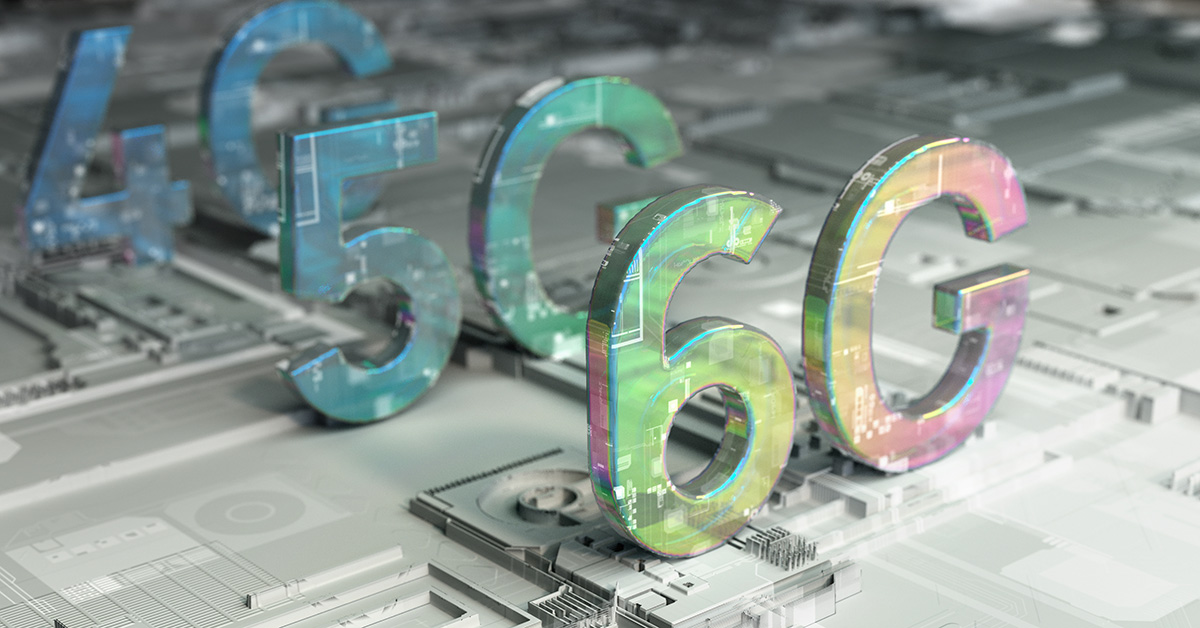
Today’s hyper-connected world is driving explosive network growth as 5G adoption continues at a frenetic pace. Plans for the rollout of 5G-Advanced and 6G networks are already heating up, even as many network service providers are still deploying mid-band 5G spectrum. Anticipating this future growth, some industry pundits suggest that the U.S. mobile industry will exceed available network capacity soon without more spectrum allocations.
Before making any hasty decisions, perhaps we should take a step back and realistically evaluate the current and future state of affairs.
Spectrum Scuffles
Two U.S. Congress members recently introduced legislation requiring the Federal Communications Commission (FCC) to auction at least 600 megahertz of spectrum between 1.3 and 13.2 GHz within three years and at least 1,250 megahertz of spectrum within six years. The proposed bill, known as the Spectrum Pipeline Act of 2024, also would direct the National Telecommunications and Information Administration (NTIA) to identify at least 2,500 megahertz of mid-band spectrum to reallocate from federal use to commercial wireless services within the next five years.
Likewise, the industry trade organization 5G Americas recently published a white paper that calls for a comprehensive roadmap to introduce new commercially available spectrum to support the rollout of 5G-Advanced and future 6G networks. However, the 5G Americas white paper focuses on the upper mid-band spectrum, ranging from 7.125-15.35 GHz, noting that “more spectrum helps ensure effective deployment of future networks and drive the emergence of groundbreaking technologies.”
These plans presuppose that more spectrum is indeed required for wide-area 5G networks and not for private networks using unlicensed frequency bands such as the Citizens Broadband Radio Service (CBRS).
5G Coverage Evolution
However, it would take some time for these new spectrum bands to be available for cellular networks, while the current 5G networks should evolve to meet the various needs for capacity and bandwidth. As 5G technology evolves to embrace cloud-native architecture and mid-band frequencies, mobile network operators (MNOs) are changing the way they plan and deploy their networks. At the same time, traditional macro cell sites are reaching saturation, pushing MNOs to densify 5G networks by building out small cells. This small cell approach provides additional 5G coverage, capacity, speed, and performance more quickly and efficiently — particularly in high-traffic urban and suburban areas.
With small cells covering shorter distances, these network architectures use the available spectrum more effectively to meet escalating demands for higher speeds, greater bandwidth, and lower latency. By serving smaller coverage areas located closer to subscribers, small cells can reuse the same frequencies more often, increasing network capacity without radical increases in spectrum allocation. This is not to say that no new spectrum will ever be required. New spectrum for 6G and beyond will be necessary, opening opportunities to drive new innovation.
As the steady drumbeat calling for more spectrum gets louder, it’s important to remember that the journey from 5G to 6G and beyond will be a marathon, not a sprint.
Capacity Where It Is Needed
Considering that 80 percent of all mobile traffic occurs indoors, perhaps the current focus should be on how much spectrum is needed for in-building communications and how it can be used most effectively. Just as small cells are used in the outdoor network to densify network capacity, in-building wireless networks using small cells, distributed radios, and distributed antenna systems (DAS) can deliver dedicated capacity and coverage indoors.
These in-building wireless solutions offload the capacity demanded of the outdoor network, mitigating or at least delaying the need for additional spectrum. Until radio and antenna technologies catch up to the physical limitations imposed by higher frequency spectrum, reaching above 6 GHz is impractical for wide area coverage and unnecessary for indoor coverage, with some exceptions such as very high capacity venues like stadiums and arenas.
Sustainable Frequencies
Spectrum above 6 GHz is incredibly expensive to deploy and operate due to poor propagation. It is not currently sustainable, requiring significantly higher transmit power than lower frequencies. Densifying the network by deploying in-building networks with sub-6 GHz spectrum is more cost-effective. The most attractive large chunk of new spectrum under consideration for mobile networks in the U.S. is 3100-3450 MHz. While this spectrum is also used by the Department of Defense, CBRS has proven the concept of shared spectrum with a priority access system and interference mitigation methods.
A modular platform like the SOLiD ALLIANCE 5G DAS supports a huge amount of bandwidth from all the major MNOs, providing access to plenty of in-building capacity with the currently available 5G spectrum. The key is proper network planning and design to allocate sufficient sector density with the available frequencies.
For help designing a robust DAS system that makes the most of the available spectrum for outstanding in-building performance, contact the experienced SOLiD Engineering and Design services team. To learn more, visit: www.solid.com/us/services/engineering-and-design.
SOLiD Tapped to Empower 5G Connectivity Throughout New Orleans Convention Center
SOLiD, the leader in cellular in-building mobile coverage, today announced that systems integrator Wireless Services selected the SOLiD ALLIANCE 5G distributed antenna system (DAS) to enhance 5G connectivity in the New Orleans Ernest N. Morial Convention Center (NOENMCC). The new DAS platform adds 5G C-Band support to ensure sufficient bandwidth and coverage for convention center attendees, anticipated to exceed 800,000 in 2024.
The DAS expansion includes SOLiD ALLIANCE Mid-Band HROU_4000 equipment to provide neutral-host connectivity with major mobile service providers operating in mid-band 5G. The ALLIANCE HROU_4000 DAS remotes will enable 2x2 multiple input, multiple output (MIMO) support for the 3.45 GHz and 3.7 GHz C-Band spectrum over a single fiber strand, delivering 760 MHz of fully occupied bandwidth.
As networks adopt additional 5G spectrum, legacy DAS architecture requires updates to support new frequency bands, as well as time division duplexing (TDD) timing sequence, which is critical for precise synchronization in 5G networks. SOLiD’s ALLIANCE 5G DAS platform offers the simplest, most reliable TDD operation, with synchronization occurring closer to the mobile device for robust reliability and peak performance.
“Steeped in the history and culture of New Orleans, our award-winning Convention Center delivers remarkable experiences infused with southern hospitality,” said Michael J. Sawaya, president and CEO of NOENMCC. “This in-building communications technology investment is a strategic part of our significant capital improvement project designed to meet the highest possible technology and sustainability standards to delight exhibitors and attendees alike.”
“At Wireless Services, we are gratified to partner with SOLiD as we continue our legacy of reliable wireless deployments in large, complex public venues,” said Aron Matassa, partner/CEO, Wireless Services. “Based on our past experience working with SOLiD, we are confident that the ALLIANCE 5G DAS platform will deliver on the promise of pervasive 5G coverage throughout the New Orleans convention center.”
“With 1.1 million square feet of exhibit space under one roof and widely fluctuating capacity needs, this project presents considerable challenges for in-building connectivity,” said Scott Deweese, president of SOLiD Americas. “The SOLiD ALLIANCE 5G DAS offers a modular, scalable design to support massive mobile traffic demands and simplify future technology evolution, improving overall service quality to transform the hospitality guest experience.”
The ALLIANCE Mid-Band HROU_4000 deployment expands on existing SOLiD DAS deployments that provide commercial and public safety communications at the NOENMCC. In addition to delivering affordable high performance, SOLiD equipment also offers industry-leading sustainability, making it an ideal choice for the gold-level LEED-certified convention center.
DAS system upgrades are scheduled to be completed before important upcoming events at the convention center, including activities related to the 2025 Super Bowl, which will be held nearby.
Why Do Data Centers Need 5G Connectivity?

Welcome to the hyperscale era. More than 5 billion internet users worldwide are driving demand for an ever-growing number of data centers, with a particular emphasis on massive data centers that can support thousands of servers.
Maintenance of these hyperscale data centers is critically important. Typical service level agreement (SLA) terms mandate nearly 100 percent uptime and “five nines” reliability, requiring peak performance and minimal downtime. In fact, data center outages can cost from $100,000 to $500,000 per hour or more, so speed is crucial when operations are down.
Although many aspects of hyperscale data center operations are fully automated, technicians often need to visit facilities to repair outages, as well as to conduct upgrades and perform regular maintenance. With the popularity of bring-your-own-device (BYOD) policies, many maintenance technicians rely on 5G service from mobile network operators (MNOs) when working in the data center. Additionally, hyperscalers increasingly use Internet of Things (IoT) 5G connectivity for environmental monitoring and measurement.
Unfortunately, when in-building mobile coverage is spotty or even nonexistent, calls are missed and connections get dropped. This means that technicians cannot communicate quickly with support personnel or access troubleshooting resources online, resulting in longer and more costly outages.
Massive Coverage Challenges
Connecting to 5G mobile service from within a hyperscale data center presents a number of challenges, especially considering that these facilities are growing to millions of square feet in size. Energy-efficient building materials, interior walls, and loaded equipment racks all block radio frequency (RF) signals coming from outside mobile networks, preventing critical access to communications.
As MNOs expand their network capacity to meet 5G demand, the RF signal characteristics of new mid-band frequencies further compound this situation. Mid-band spectrum, such as the C-Band and Citizens Broadband Radio Service (CBRS), provides significantly greater capacity for outdoor wide-area networks due to larger channels. However, these wider RF channels have a shorter signal propagation range and consume more radio output power, reducing overall coverage area.
The end result is that popular 5G frequencies do not provide good quality in-building coverage for even the smallest data center. This problem is only more challenging for massive hyperscale data centers that are situated in remote locations where outdoor mobile service may be entirely lacking.
Mission-Critical Connectivity
To ensure reliable in-building connectivity to all the major MNO networks, savvy data center operators deploy a neutral host Distributed Antenna System (DAS) solution, such as the SOLiD ALLIANCE 5G platform. With a modular design, SOLiD’s DAS solutions offer maximum flexibility and scalability, enabling easy upgrades to support the latest 5G spectrum, growing capacity demands, and the next technology evolution.
A fiber-to-the-edge system like the SOLiD ALLIANCE edgeROU securely carries voice, data, and IoT transmissions all the way to the edge of the network, improving service quality for pervasive coverage throughout any hyperscale data center, no matter the size or configuration. With the extremely high bandwidth and data speeds made possible with fiber-to-the-edge technology, data center operations teams can experience outstanding in-building connectivity, whether they are in the server room, operations center, or mechanical closet.
Sustainable Today and Tomorrow
Today’s global data center carbon footprint already exceeds the entire airline industry, and hyperscale power consumption is estimated to reach 35 Gigawatts by 2030 in the U.S. alone — almost double the 2022 level. With growing reliance on sophisticated artificial intelligence (AI) technology further driving up energy use, sustainability is more crucial than ever.
SOLiD’s reliable DAS solutions are built on a history of sustainability, resulting in the highest performance with the lowest carbon footprint. The SOLiD ALLIANCE edgeROU DAS is the smallest, lightest remote in its class, consuming one-third the energy of competitive products, yet offering more bandwidth, higher RF output, and a low total cost of ownership (TCO).
In the hyperscale data center market, speed and agility are vital to remaining competitive and profitable. Without seamless access to always-on, in-building connectivity for their operations teams, data centers risk costly extended service outages and missed SLA targets, as well as their reputation.
To learn how to ensure mission-critical data center in-building connectivity with affordable, reliable SOLiD DAS solutions, visit: solid.com/us/industries/data-centers.

